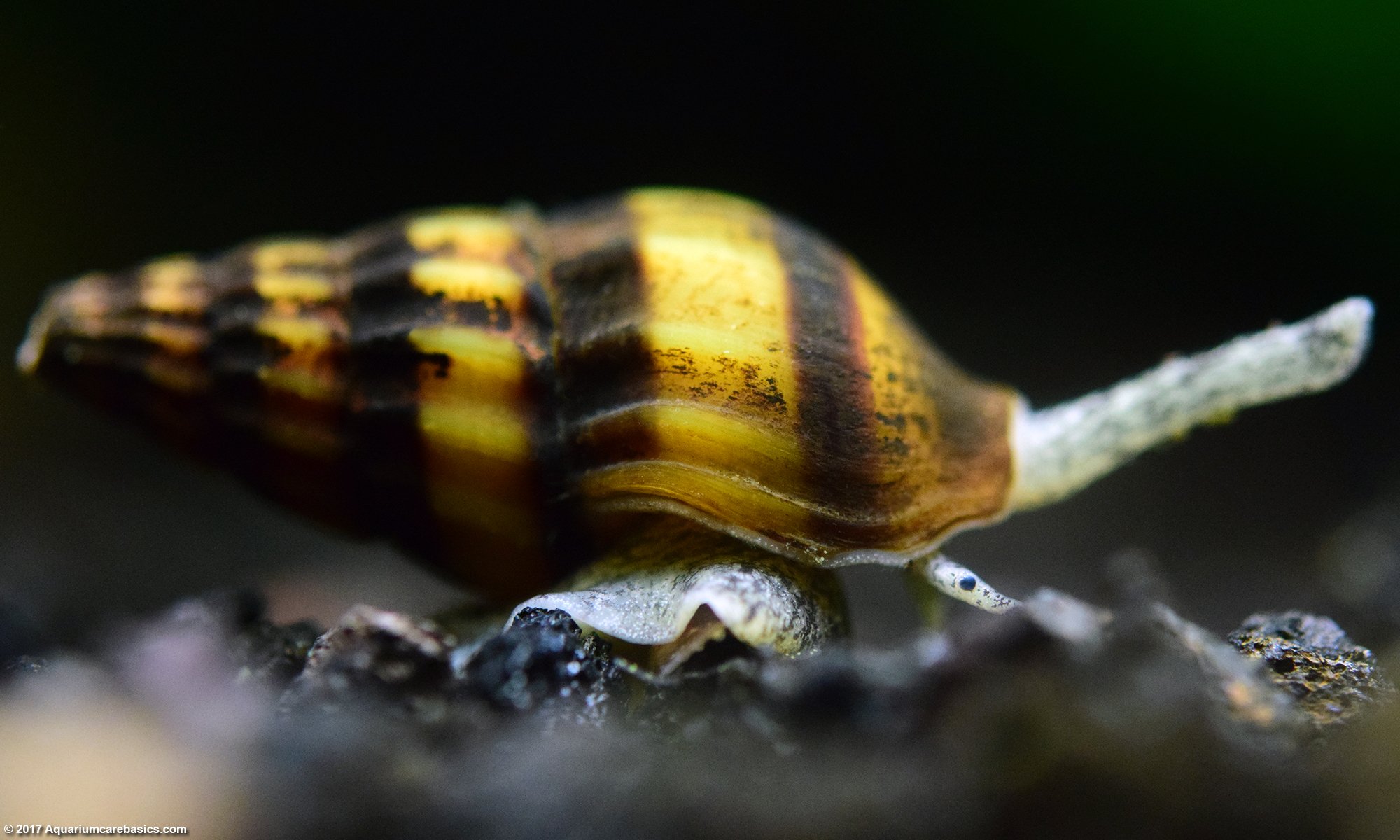Bumblebee Snails
Bumblebee snails are a fascinating addition to any aquarium. These small, brightly colored snails can add a pop of color to your tank while also serving an important purpose. Keep reading to learn more about these amazing creatures.
Potential Issues with Bumblebee Snails
While bumblebee snails are generally easy to care for, there are a few potential issues that you should be aware of. For example, bumblebee snails can be sensitive to changes in water parameters, and they may not do well in tanks with aggressive fish that might try to eat them. Additionally, bumblebee snails may not be the best choice if you have a lot of live plants in your tank, as they can sometimes damage the leaves and stems.
The Target of Bumblebee Snails
Bumblebee snails are a type of carnivorous snail that feeds on algae, detritus, and small crustaceans. They are a popular choice for aquarists looking for a natural way to control algae and keep their tanks clean. Bumblebee snails are also known for their bright yellow and black markings, which are reminiscent of a bumblebee.
Summary of Bumblebee Snails
Bumblebee snails are fascinating creatures that can provide both aesthetic value and practical benefits to your aquarium. They are relatively easy to care for, but do have some potential issues to be aware of. They feed on algae, detritus, and small crustaceans, making them an excellent choice for aquarists looking for a natural way to clean their tanks.
Why Bumblebee Snails are Important for Your Aquarium
In my personal experience, bumblebee snails have been a valuable addition to my tank. They are great at controlling the algae growth, and their bright colors make them a fun and interesting fish to watch. But bumblebee snails are more than just pretty decorations—they also play an important role in keeping your tank clean. By consuming detritus and other organic matter, they help to reduce the amount of waste in your tank and improve water quality.

If you're thinking about adding bumblebee snails to your tank, it's important to make sure that you have the right setup. They prefer tanks with plenty of hiding places, as well as substrates that allow for easy burrowing. Additionally, you should avoid adding bumblebee snails to tanks with aggressive fish, as they may become prey.
Caring for Bumblebee Snails
When it comes to caring for bumblebee snails, there are a few key things to keep in mind. First, make sure that you have the right water parameters. Bumblebee snails prefer a pH between 7.5 and 8.2, as well as a temperature between 72 and 78 degrees Fahrenheit. Additionally, make sure that you're feeding your bumblebee snails a varied diet that includes both algae and meat-based foods.

In terms of tank maintenance, you should perform regular water changes and clean your filter to prevent buildup of waste and debris. You should also monitor your tank for signs of sickness or stress, such as loss of color, lethargy, or excessive burrowing.
Benefits of Bumblebee Snails
Bumblebee snails can be a valuable addition to your aquarium. In addition to controlling algae growth and improving water quality, they can also serve as a food source for larger fish and other aquatic creatures. They are also relatively easy to care for, making them a great choice for beginners and experienced aquarists alike.

How to Breed Bumblebee Snails
If you're interested in breeding bumblebee snails, it's important to create the right conditions. Bumblebee snails prefer low-light environments with plenty of hiding places, as well as a diet high in protein and calcium. Once your snails have mated and laid eggs, you'll need to create a separate breeding tank to ensure that the eggs hatch successfully.
Question and Answer
Q: Can bumblebee snails live with other types of snails?
A: Yes, bumblebee snails can coexist with other types of snails as long as they have enough room and resources.
Q: Do bumblebee snails need a lot of sunlight?
A: No, bumblebee snails do not require a lot of sunlight. In fact, they prefer low-light environments.
Q: Can bumblebee snails be housed in a reef tank?
A: Yes, bumblebee snails can be housed in a reef tank as long as they do not harm the live coral.
Q: How long do bumblebee snails live?
A: Bumblebee snails can live for up to two years in the right conditions.
Conclusion
If you're looking for a colorful and practical addition to your aquarium, bumblebee snails are an excellent choice. With their ability to control algae and improve water quality, they are a valuable addition to any tank. Whether you're a beginner or an experienced aquarist, bumblebee snails are easy to care for and provide hours of entertainment. So why not add a few to your tank today?
Gallery
Bumble Bee Snail - Available At FragBox

Photo Credit by: bing.com / snail snails bumble anentome feeding freshwater aquascape keong clea pembasmi hama salyangoz katil bumblebee fragbox inverts tankmates compatibility
Bumble Bee Snail – Detailed Guide: Care, Diet, And Breeding - Shrimp

Photo Credit by: bing.com / snail bumble aquariumbreeder engina
Something Fishy :: Aquarium Livestock :: Inverts & Clams :: Snails

Photo Credit by: bing.com / bee bumble snails snail bumblebee aquarium engina toofishy
Bumblebee Snail - Pusiostoma Mendicaria | That Fish Place

Photo Credit by: bing.com / snail bumblebee
Assassin Snail/ Bumblebee Snail - Buy Aquarium Plants And Aquarium

Photo Credit by: bing.com / snail assassin bumblebee previous
